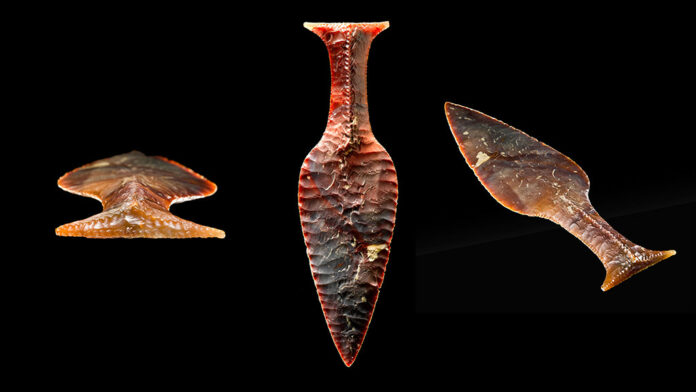A Chance Discovery That Changed Everything
The Boy Who Found a Treasure
In 1867, on the picturesque Danish island of Fænø, a young boy’s excited shout echoed across a field: “Look, mum, what a beautiful stone!” Little did he know that his keen eye had just uncovered one of the most remarkable artifacts from the Nordic Stone Age – the Hindsgavl Dagger.
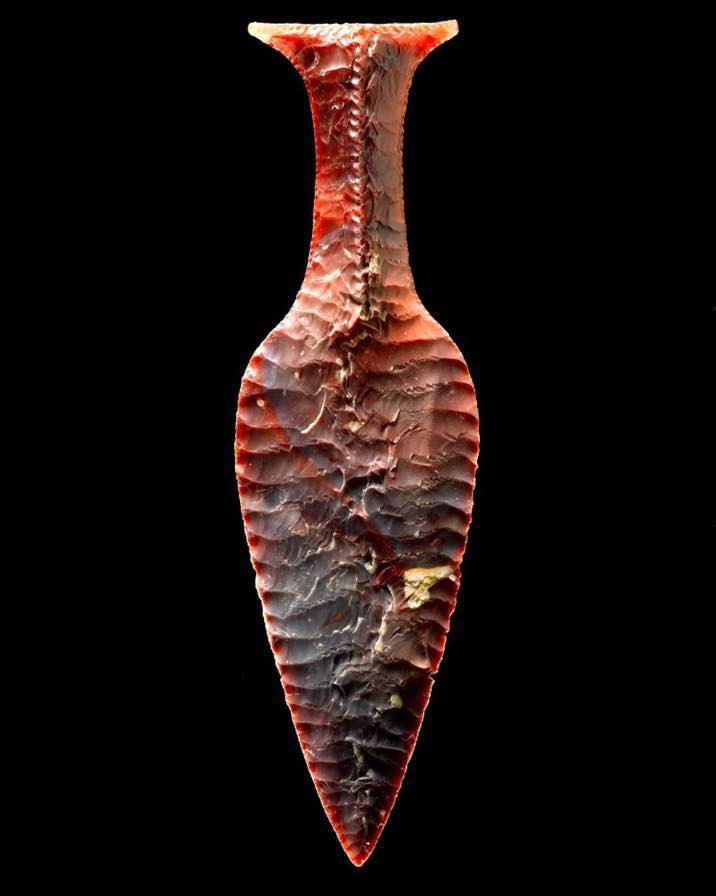
From Local Find to International Sensation
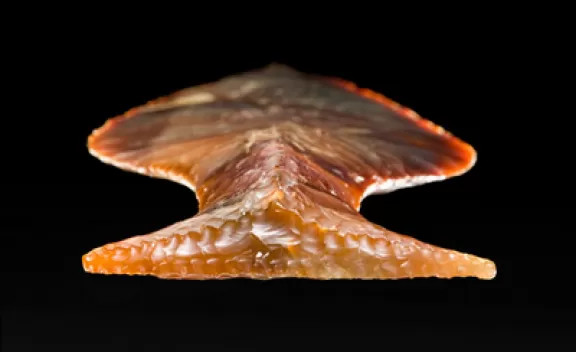
The dagger’s journey from a humble field to the world stage began in 1889 when it was showcased at the Exposition Universelle in Paris. Its exquisite craftsmanship captivated attendees, including Sophus Müller, the director of the National Museum of Denmark. Müller’s admiration for the piece would eventually lead to its permanent home in the museum.
The Artistry of Ancient Craftsmanship
A Masterpiece in Flint
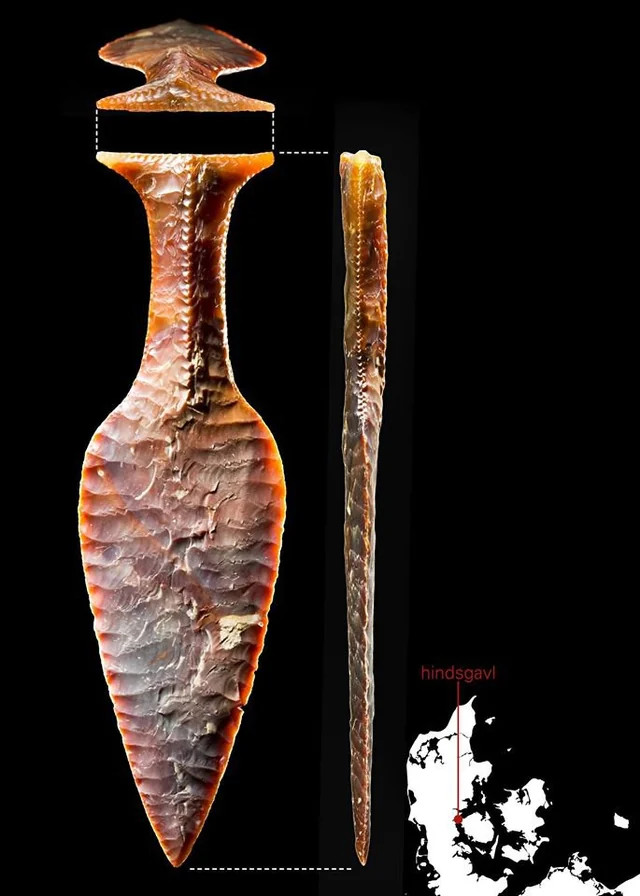
Dating back to around 1900-1800 BC, the Hindsgavl Dagger stands as a testament to the incredible skill of Nordic flint knappers. At 29.5 cm long and less than 1 cm thick, this delicate yet deadly weapon showcases a level of precision that still amazes modern observers.
Innovation Inspired by Bronze
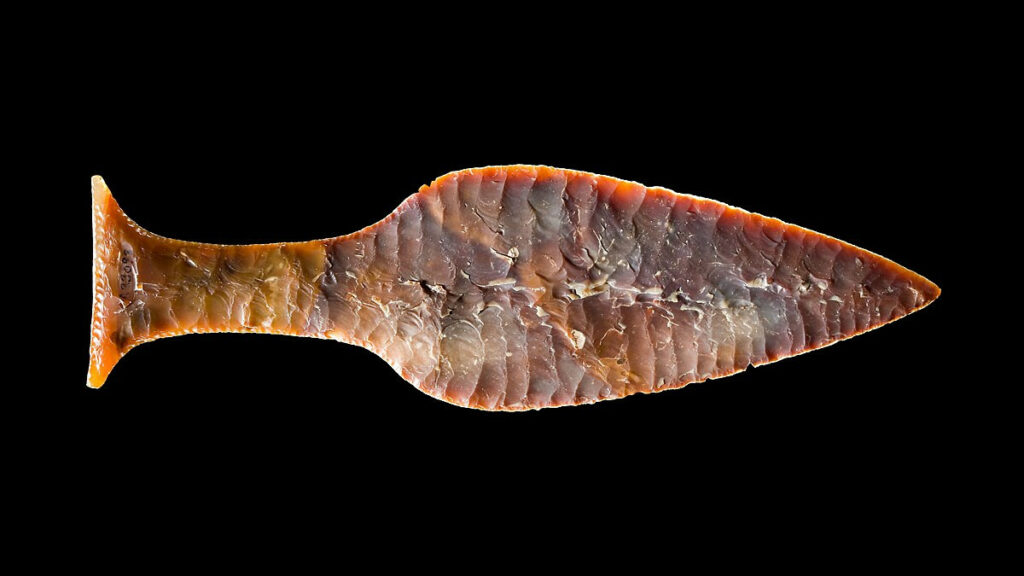
The dagger’s distinctive fishtail shape, inspired by imported bronze daggers, demonstrates the adaptability and creativity of Nordic craftsmen. They seamlessly blended foreign influences with their own traditions, creating a unique and iconic design.
A Legacy Carved in Stone
From Museum Piece to National Symbol
Today, the Hindsgavl Dagger holds a place of honor in the National Museum of Denmark. Its significance extends beyond the museum walls, gracing the current Danish 100-krone banknote and serving as a powerful symbol of the nation’s rich cultural heritage.
A Window into the Past
As we admire the Hindsgavl Dagger, we gain insight into the artistic prowess and cultural identity of our Stone Age ancestors. It stands as a reminder of human ingenuity and the timeless allure of ancient artifacts.
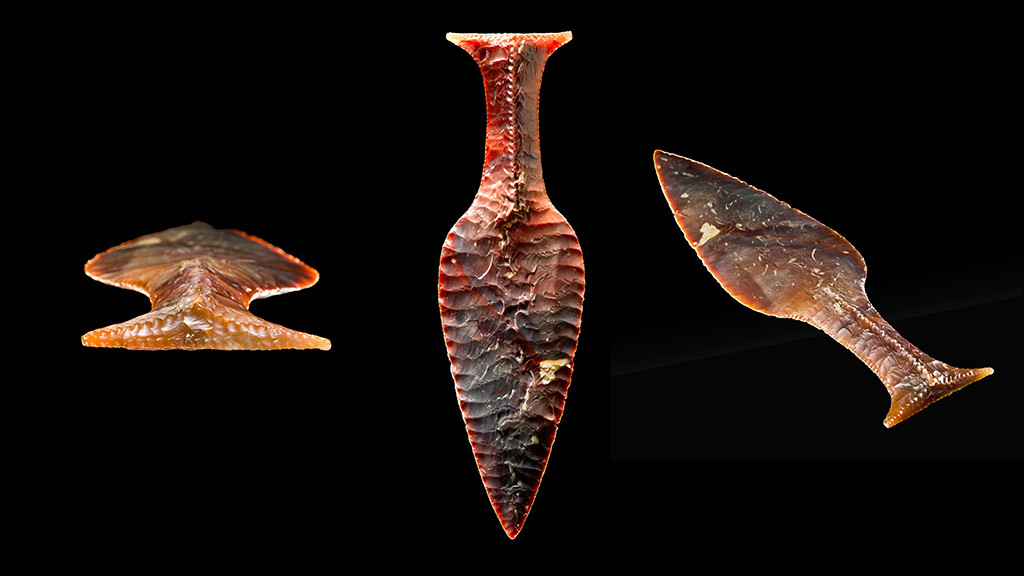
Conclusion: The Enduring Power of Ancient Art

The story of the Hindsgavl Dagger, from its chance discovery to its status as a national treasure, reflects the enduring fascination we have with our past. This masterpiece of flintknapping continues to inspire wonder and appreciation, connecting us to the remarkable achievements of those who came before us.
